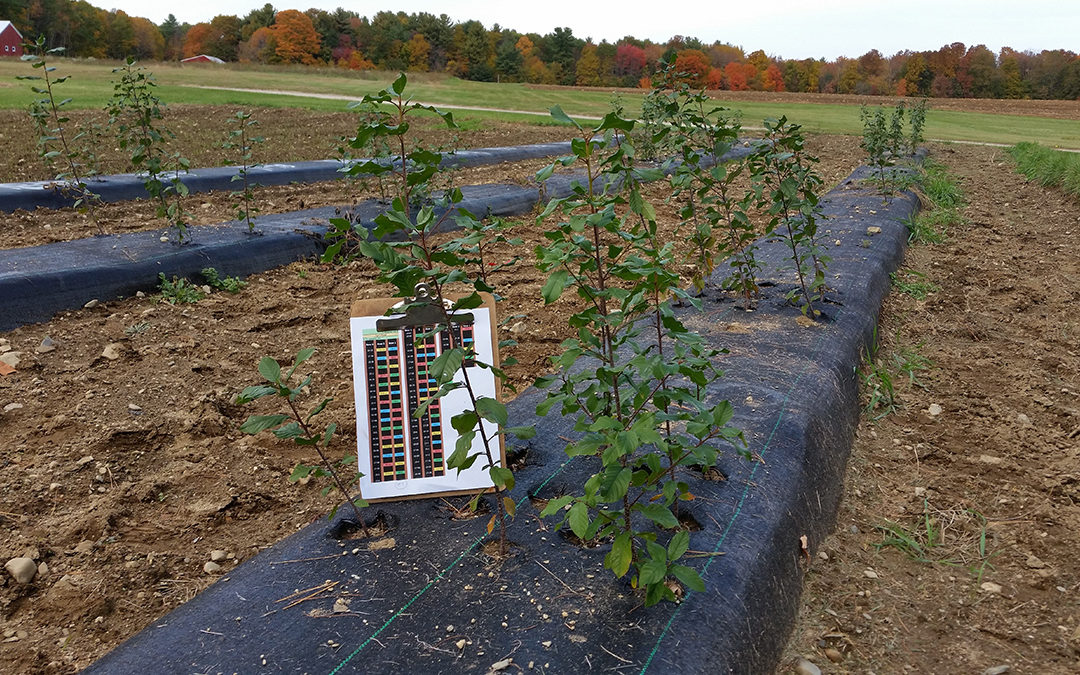By Lori Wright, UNH News Service:
Researchers with the NH Agricultural Experiment Station have found that the economically valuable eastern white pine thrives when the invasive glossy buckthorn shrub is actively managed in New Hampshire forests.
The University of New Hampshire research was conducted by Tom Lee, associate professor of forest ecology, Steve Eisenhaure, land use coordinator with the UNH Office of Woodlands and Natural Areas, and Ian Gaudreau, former UNH graduate student in environmental engineering. The research is presented in “Pre-logging Treatment of Invasive Glossy Buckthorn (Frangula alnus Mill.) Promotes Regeneration of Eastern White Pine (Pinus strobus L.)”in the journal Forests.
“The forest products industry is important to New Hampshire’s economy and eastern white pine is one of our most valuable tree species. Anything, including invasive shrubs, which inhibits eastern white pine growth is of concern to the industry and should thus be a concern to the people of the state,” Lee said. According to the North East State Foresters Association, the annual value of sales of New Hampshire’s forest products industry totals nearly $1.4 billion.
“Non-native plants, including the shrub glossy buckthorn, have colonized many of New Hampshire’s eastern white pine forests and interfere with tree seedlings, reducing their growth. We wanted to know the degree to which glossy buckthorn inhibits seedling growth, and we wanted to see if removal of glossy buckthorn would release young pines and enhance their growth,” he said.
Researchers removed buckthorn stems from the understory of eastern white pine stands on UNH land. Removal was done by manual cutting with brush saws or with by flame guns. After five applications of the treatments over two years, the stands were clear-cut or thinned in the winter of 2009-2010. When a tree canopy of white pines is opened up, such as after logging, glossy buckthorn can take over an area in just a few years, forming a dense thicket. Researchers wanted to see if the manual cutting with brush saws or with flame guns prior to logging would inhibit the shrub’s growth.
Three and five years after logging, researchers found reduced glossy buckthorn size and numbers in treated areas, and greater heights and densities of eastern white pine seedlings where glossy buckthorn had been reduced. However, the invasive shrub was not eradicated at any site, and where new glossy buckthorn thickets formed, eastern white pine seedling growth was reduced.
Researchers concluded that the eastern white pine seedlings had been inhibited by glossy buckthorn and were released when the shrub was removed.Cutting and flaming had similar effects, but both treatments were very expensive to apply, which would likely prevent the method from being used on extensive scales.
Going forward, the researchers plan to examine less expensive approaches to limiting the effects of glossy buckthorn on eastern white pine seedlings, such as herbicides. Researchers currently are investigating other methods to control glossy buckthorn at UNH’s Kingman Research Farm where they have planted an orchard of the fast-growing shrub. By planting the orchard, the team aims to determine the life history characteristics of invasive glossy buckthorn under controlled conditions, free from competition with other plants, and free from variation in other environmental factors such as soil or micro-climate. They also will test, under rigorously controlled conditions, the effect of competition from glossy buckthorn on eastern white pine seedlings and determine the impact of manual cutting of glossy buckthorn of different ages on buckthorn growth and survival.
Eventually the team plans to examine the role of site preparation on glossy buckthorn invasion – to see if they can inhibit buckthorn invasion by planting mixes of other species such as grass turfs or by compacting soils.
This material is based upon work supported by the NH Agricultural Experiment Station, through joint funding of the National Institute of Food and Agriculture, U.S. Department of Agriculture, under award number 0225004, and the state of New Hampshire.



 Return to the Concord Monitor
Return to the Concord Monitor